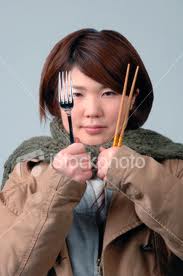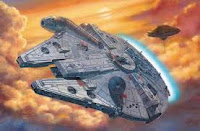I imagine a small portion of the history of European imperialism thusly,
Europe: We need to open up a trade route to China. They have spices that dazzle the tongue. They also have a beverage that I quite possibly believe to be nectar from the gods. They call it Tea. It would be a goodly and Christian thing to establish a trade route with the Far East as these savages are not cultured enough to eat with fork and knife, instead preferring a primitive method of food consumption involving two twigs, or sticks.
I can recall mastering the use of chopsticks with the same alacrity that I can recall a reading I stumbled upon on the myth of redemptive violence.
Back in January of 2005, when I came home from a 15 month deployment to Iraq, I wasn't really home. I was in Langley, Virginia. And, the exact date was Sunday January 23, 2005. The day the Steelers lost the AFC Championship to their hated AFC nemesis, the New England Patriots (It is much easier to lose the Super Bowl in a stadium far away to a storied franchise whose legendary coach's name has been immortalized on footballs ultimate trophy than it is to lose at home to the NEPs for the Lamar Trophy).

Before the mighty Steelers fell, the Army ordered Chinese. For everyone. You see, the reason we were in Langley and not home has everything to do with the weather. The reason the Army ordered Chinese for all returning troops was also because of weather. We should have been home a few days prior, but a blizzard hit the east coast. The storm was so bad we actually had a 36 hour layover in Frankfurt, Germany. I had a beer at McDonalds. By the time Sunday the 23
rd rolled around, Virginia was the closest to home we could get safely. Langley (and the Army) were not prepared for an extra few hundred troops, and Army regs state that troops must be provided meals. Enter the Dragon - I don't really remember the name of the local restaurant that successfully rose to such a Herculean task. What I do remember is that they did not bring forks. They brought chopsticks. Very few soldiers knew how to use chopsticks. I was not one of them. I was simultaneously amused and disgusted at those who decided to eat with their fingers. Some soldiers attempted to skewer the food with the chopsticks as if one stick were the equivalent to a one pronged fork. For me, I felt the best course of action was to try and master the art of chopstickery myself. And, after a few failed attempts, some reflection and observation, I mastered the use of chopsticks right there in a hanger of Langley, Virginia. Of all my accomplishments, it is secretly one of those that I am most proud of. Years later, I would find myself in an upper-level undergrad Anthropology course reading scholarly books and articles on Jedi (yes, these do exist). And there, in the annals of scholarly Star Wars lore, I would stumble upon the myth of redemptive violence.
I wish I could recall the author's name, or even the book's title that bore this insightful treasure. I could probably try and dig up my paper and check the bib, but…
This is a brief paraphrasing of the argument:
At the end of the movie Star Wars, when the Death Star has been blown up and the Rebel Alliance secured its first major victory against the Empire, the audience probably cheered right along. Good triumphed over Evil in a very Jungian (who George Lucas studied) archetypal sense. But they (the Rebel Alliance) did so in a very violent fashion that eliminated the lives of hundreds of thousands of people. Now most would probably be okay – citing justice. An abstract concept to cover the very real loss of life. We know from world history that violence is not the only way to overcome oppression and injustice. Gandhi proved as much. So did Martin Luther King Jr. But our stories, from the beginning of time (Shiva the Destroyer and the creation of the world) to Star Wars have been telling us otherwise. The only solution to force is force. The only solution to violence is violence.
Bullpucky. But what does this have to do with chopsticks and writing?
If you were to do a comparative analysis between the nature of the Fork and the nature of Chopsticks, any reasonable person would have to conclude that of the two, Chopsticks are the less violent method of food consumption. A fork stabs. A fork penetrates. Its metallic composition is cold and detached. To eat with a fork is to commit an act of violence. Conversely, to master Chopsticks is to master cooperation between two separate entities. It is an act of balance and union. To eat with Chopsticks is to commit an act of harmony. Is it this class that we discussed how we think what we think (through frames and metaphor)? So for example, I know that the white knight typically represents "good" and the black knight "bad" in an archetypal sense because growing up I was afraid of the dark and comforted by light. This is only one of literally thousands of metaphors our mind constantly frames our world through. Thus, though we realize it or no, a frame was established at a very young age when we learned how to eat. This frame is rooted in a metaphor of violence (the act of stabbing). So, now you know why I prefer chopsticks to forks, but what does this have to do with writing?
When reading the Covino reading, as well as most of our other readings, I've detected the slightest trace of violence – this need to stab at power. Their voices say, "This is what has been said, this is why what has been said is wrong, and this is why I am right". We see this in the Covino article when he seemingly decries expressivism while lauding the triangles of rhetoric:
…and are intended to suggest that rules for writing are antiexpressivist, that they pale in comparison with the varieties of language play that can develop the imagination, and that a prescriptive approach to writing is dull and unnatural…[however,] Kinneavy presents what has become an often-adapted 'communication triangle,' which stands for the relationship that he argues attends all language use, among an encoder (writer), decoder (audience), and a reality (context). In this connection, we might say that a rhetorical pedagogy consists in encouraging writing that is NOT RESTRICTED TO [emphasis added] self-expression… but instead keeps in view the skills and contingencies that attend a variety of situations and circumstances (36-37).
Covino wants to tear down the walls of one structure so that he can put in place one that he feels to be more pleasing to the eye. If he can convince a community large enough that his design is better, he will be admired until someone else comes along who has a different way of looking at things and wants to tear down Covino's structure and put in place her own edifice, and so on – ad infinitum. Covino, to his credit, recognizes this and hedges his bet by suggesting that, "The question, now as always it seems, is whether a rich conception of rhetorical pedagogy can be sustained…"
For my purposes, I find value in both expressivism and triangles. I think both contribute something positive to the discourse on writing pedagogy. I view both as separate pieces to a greater puzzle. You permitted me to recreate a brief history of Europe imperialism, allow me to create a brief glimpse into the future of writing pedagogy.

I see a world where academics, instead of vying for pedagogical superiority, work in collaboration with one another. Instead of tearing down walls and building new ones, decorate the view that is already in place. You may need to knock a wall or two down, but do so in a way that enhances the core structure. If I were to put the puzzle pieces in place I would say that students, before ever learning how to write, must first learn how to think. Freewriting or expressivist writing is a great start; it helps lead to a discovery of voice. Once that voice is discovered, then students should learn to put that voice to use - that is to say they must learn to express their beliefs and opinions in a convincing fashion and that rhetoric is a tool that can get them there. Once students have been taught how to first think and then express (in terms of audience and context recognition). Expose the students to new and different cultures and critical theories that might challenge preconceived notions. The goal is to build upon each piece - grammar, usage, and writing formulas are advanced matters, the last pieces of the puzzle - until a picture of literacy is achieved. After all, is that not the ultimate goal of writing pedagogy?
 I like to curse. Blame that on the military if you must. Bootcamp is where I discovered the joy of profanity. Swearing was cathartic. A way to alleviate stress and tension. And who knew that one word, a word like ‘Fuck’ could be so diverse (for more on the diversity of the word Fuck, see blog titled “Warning: Some Content May Not Be Suitable for All Adults”). Unfortunately, for me and my sailor’s mouth, the classroom setting rarely
I like to curse. Blame that on the military if you must. Bootcamp is where I discovered the joy of profanity. Swearing was cathartic. A way to alleviate stress and tension. And who knew that one word, a word like ‘Fuck’ could be so diverse (for more on the diversity of the word Fuck, see blog titled “Warning: Some Content May Not Be Suitable for All Adults”). Unfortunately, for me and my sailor’s mouth, the classroom setting rarely






















